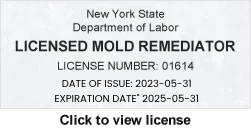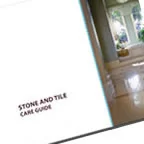
Mold in Carpet
Carpet can add so much cozy comfort to a home. Unfortunately, like almost any surface, it is susceptible to mold. In dark, damp environments, such as underneath sinks, in appliance drip pans, inside walls near plumbing, under or around house plants, and under carpet, mold problems can develop. To keep your carpet fresh, clean, and mold-free, it is important to keep it properly maintained, occasionally inspect it for mold, and take preventative measures to fend off mold problems.
How Does Mold Happen?
Mold can develop in a lot of different ways. Maybe your child spilled something and didn’t tell you. Maybe one day when you were out, your dog or cat had an accident, and you didn’t know. Perhaps you are not aware there is a small plumbing leak somewhere. Mold is everywhere and once moisture is introduced, the process of mold can begin on many different types of surfaces. It only takes 24 hours for the mold to start growing once an area gets wet. Carpets are not exempt from this process.
Is There Mold in My Carpet?
You may be wondering how you can tell whether mold is in your carpet. First, carefully inspect your entire carpet. For expansive areas, it might be helpful to imagine a grid going from the front of the room to the back and from the left side of the room to the right side, and then inspect each point along the grid. If you notice any off-color areas (black, green or maybe red) on your carpet, this may be an indication of mold.
WARNING: The only truly “safe” way to identify mold in carpet is to hire a mold removal company. If you decide to investigate yourself, try not to disturb the area too much, because doing so can send mold spores into the air. Don’t touch the stain without gloves. Mold spores can cause health issues, especially for people with asthma and allergies.
If the discoloration has a sour, musty, or moldy smell, then it may be mold. If possible, pull the rug and pad up where you suspect mold. Check the layers to see if there is mold underneath, and if so, how far down the mold has gone.
What You Should Know About DIY Mold Testing Kits
There are two types of mold testing kits: air and surface. For testing mold in carpet, we recommend a surface test, which requires you collect a sample using a swab or tape. Be sure to closely follow the manufacturer’s instructions.
What Should I Do if I Have Mold in My Carpet?
The simple answer is call your carpet cleaning professional. You may be tempted to go online and try to resolve the problem using DIY methods, but why risk it? Mold can be hazardous to your health and damaging to your home, and there are many DIY methods that can cause permanent damage to your carpeting. Your carpet cleaning technician can examine the area, and as long as the problem is not widespread or excessive, they can use special equipment and solutions to thoroughly clean and sanitize the area. For more severe mold damage, they may recommend a mold remediation company.
There is no guarantee that any company, even one that specializes in mold remediation, can completely remove 100% of mold spores from carpeting. However, there are preventative measures you can take.
How Can I Prevent Carpet Mold in My Home?
-
- Keep your carpet dry. When humidity is high, run a dehumidifier or your HVAC system (which dehumidifies the air).
- Soak up spills right away.
- If possible, open windows or use a fan to dry the spills as soon as possible.
- Vacuum carpets regularly.
- Use a vacuum equipped with a HEPA filter bags. Ask your technician to make specific recommendations for how often you should vacuum your carpets, based on how much traffic your carpet gets.
- Change your vacuum bags regularly, according to manufacturer instructions.
- Inspect your carpet regularly for spills and stains.
- Place high quality, heavy-duty mats at entrances to reduce the amount of water or moisture tracked in from outside.
- Get your carpets professionally cleaned on a regular basis. Like vacuuming, ask your technician to make specific recommendations for how often you should have your carpets cleaned, based on how much traffic your carpet gets.
- If you are purchasing new carpet, consider synthetic material instead of natural material like wool. Synthetic material is resistant to mold.
Your health, and that of your family and guests, as well as your home itself, are your biggest assets. Protect them both by contacting your carpet cleaning professional in this situation. Follow their lead. They know best.
This article is one of a series of articles written and published on behalf of Surface Care PRO Partners.








